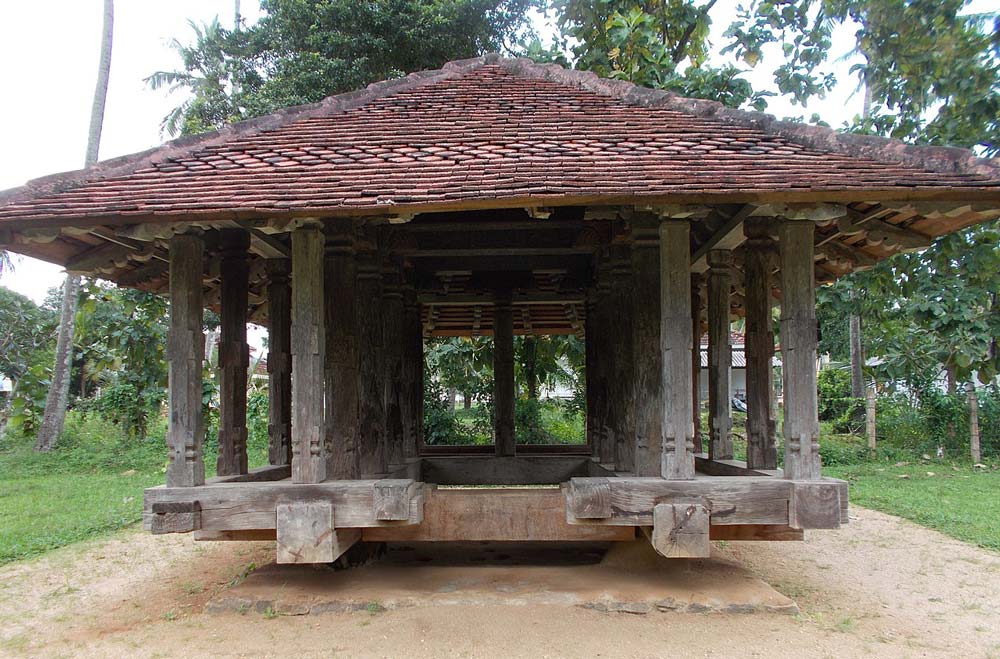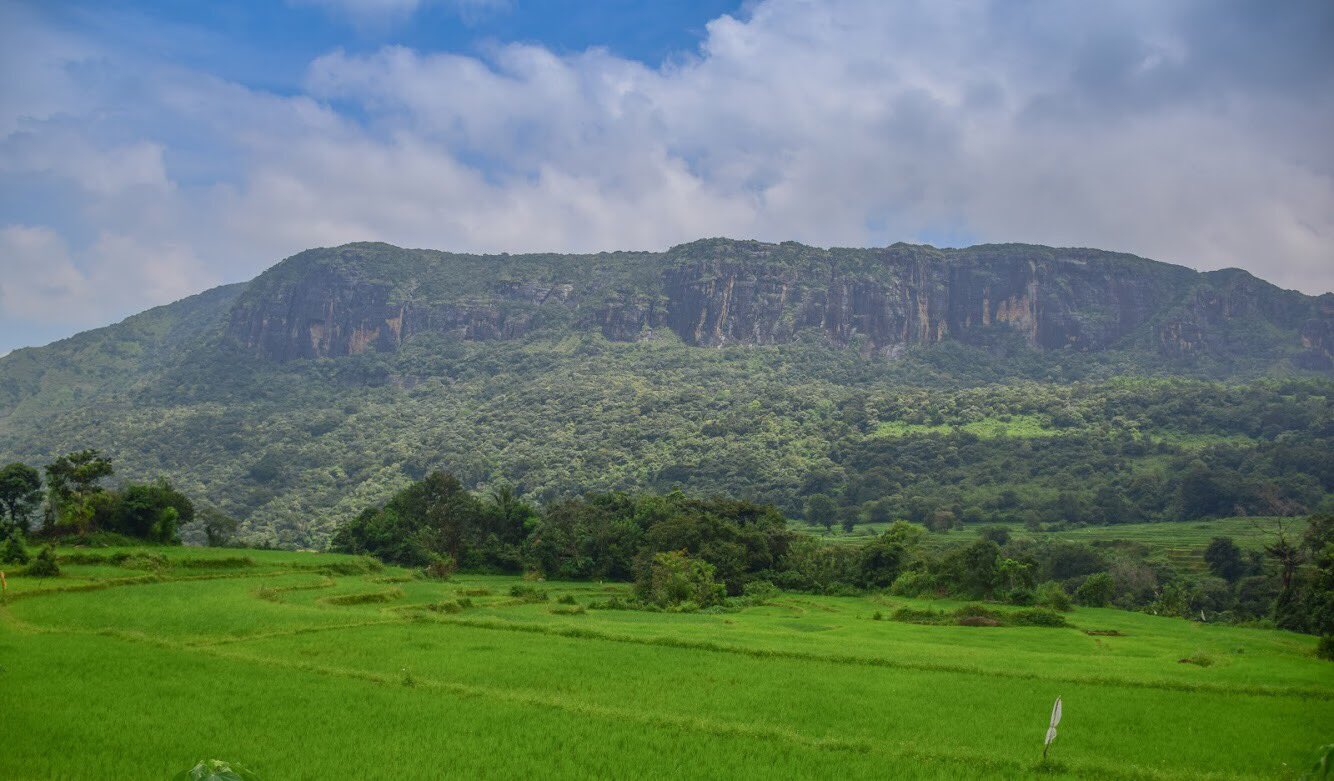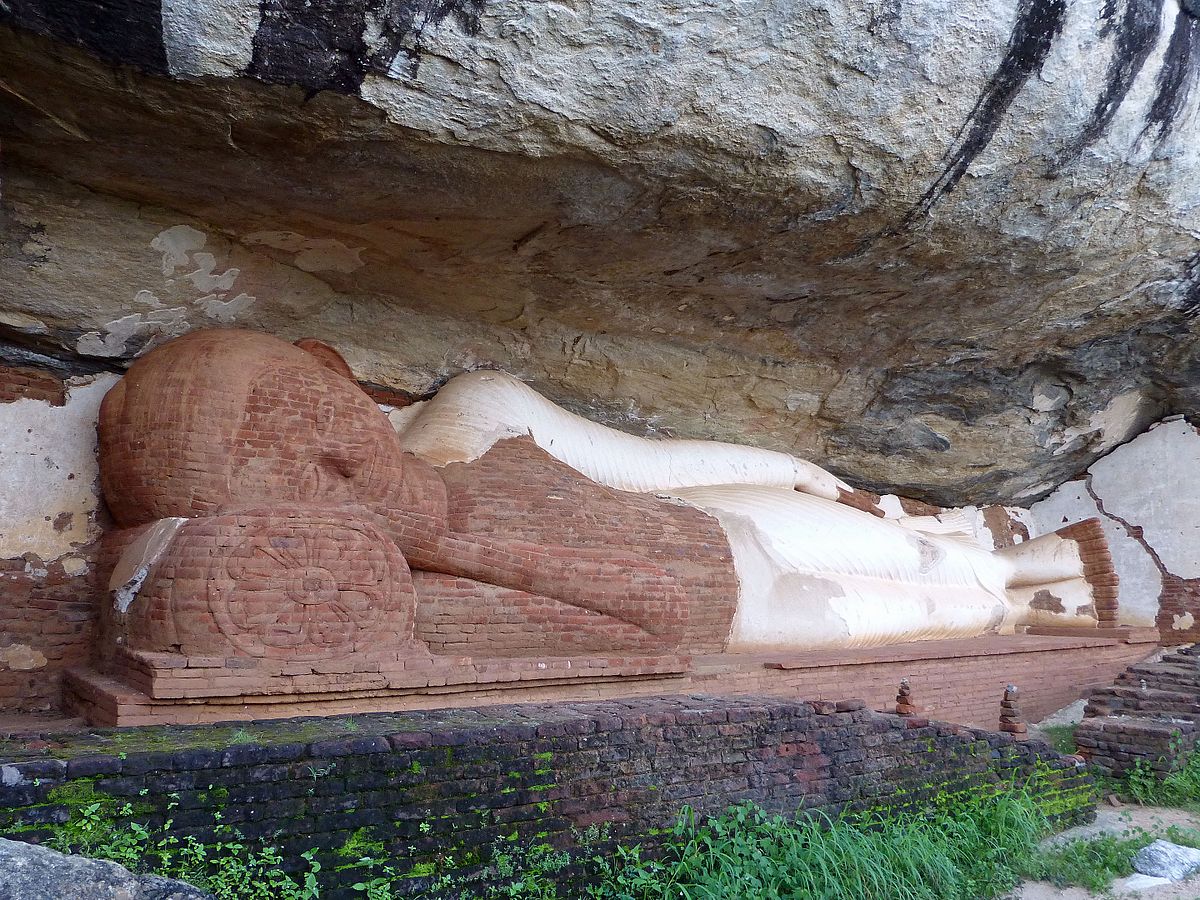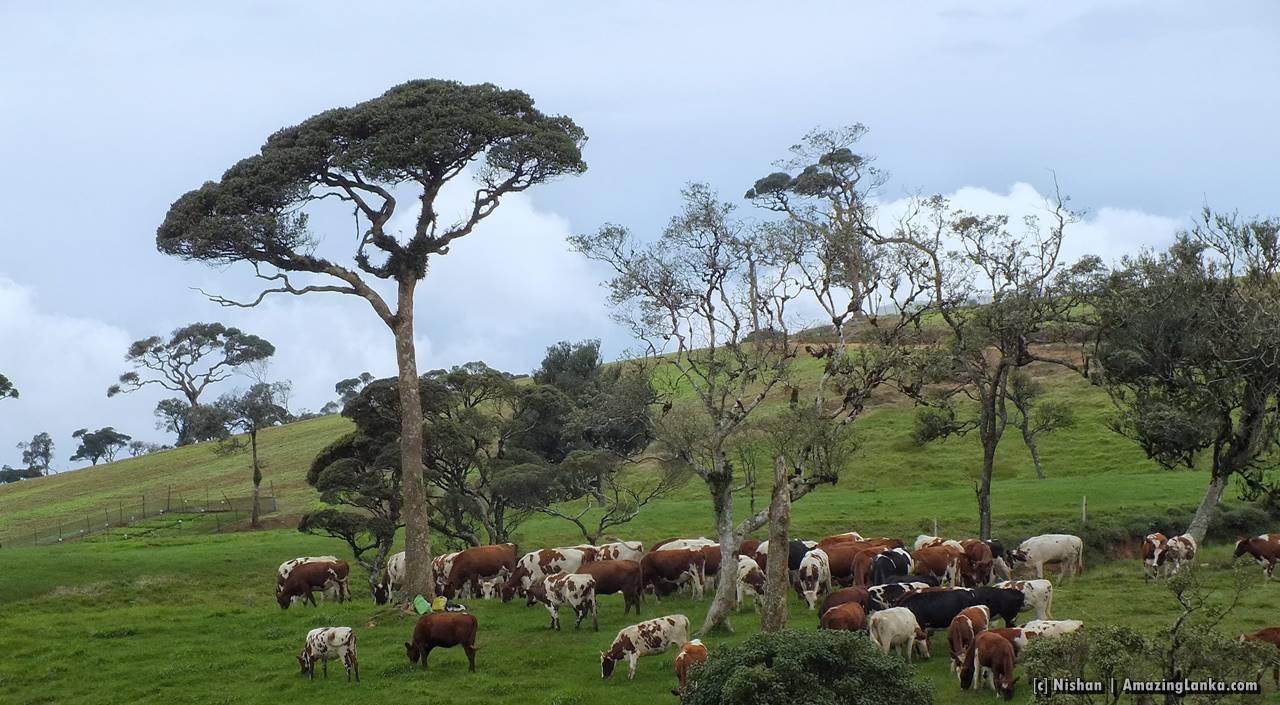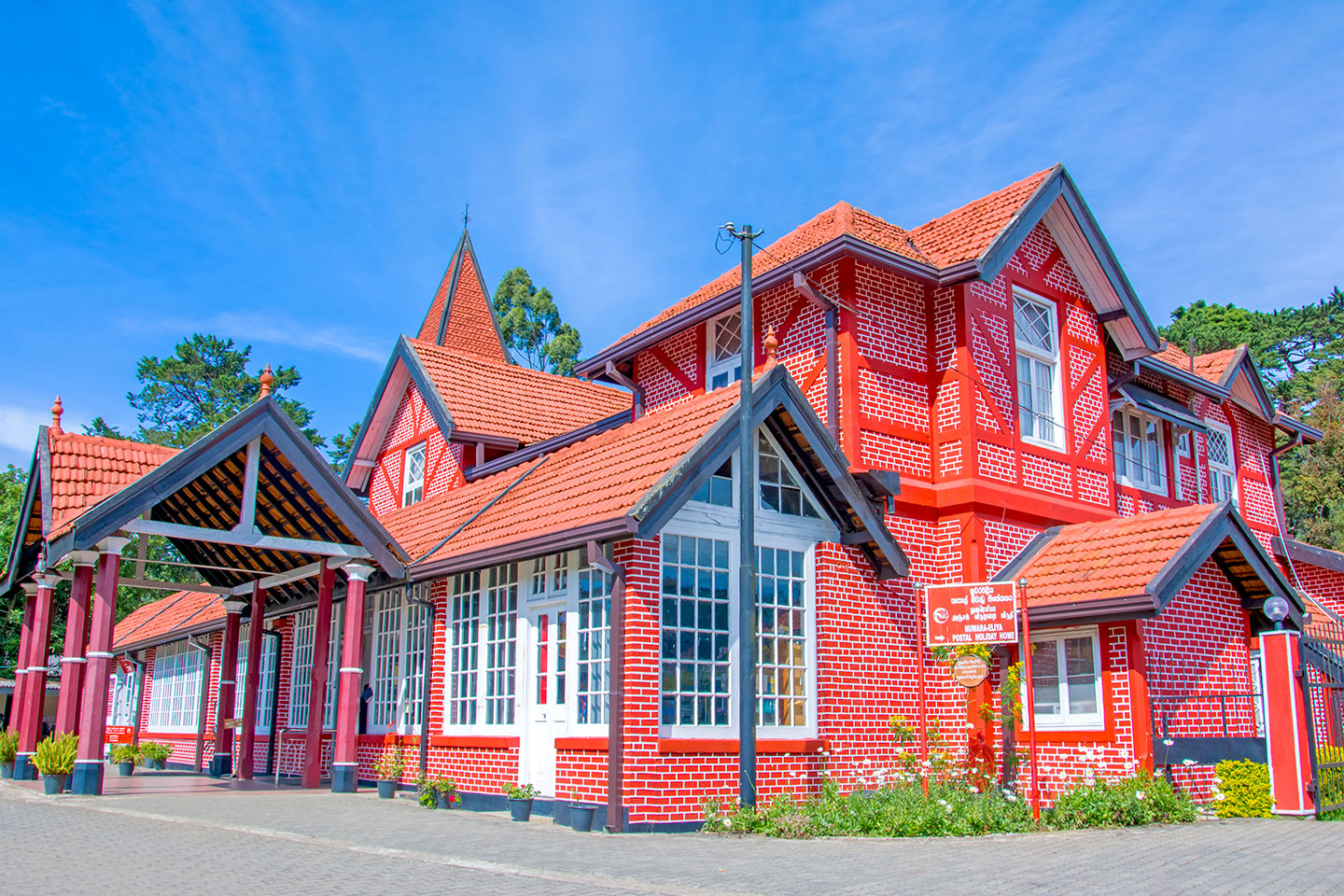The Aloka Vihara became Aluvihara. Folklore has many meanings to the name Aluvihara. One is that the Pali word Aloka was Alu (light) in ancient Sinhala and as it was the abode of Theras, it was a Viharaya. Hence the two words have been coined to make it Aluvihara.
Another view is that although there is a huge rock, east of the main rock cave, it has not cut off the light. Therefore it was known as the Aloka lena (cave with light).
Surrounded by hills, the famous Aluvihara cave temple 30 km south of Kandy on the Matale-Dambulla road is of great historic importance. The history of Aluvihara is traced back to the 3rd Century B.C in the reign of King Devanampiyatissa. It is believed that the King built the Dagaba and planted the Bo sapling.
There is a belief that the rock caves are the result of a massive landslide in the hill country. At present there are 13 rock caves. Three caves have been overgrown with shrubs and buried under soil a years ago. Now on Poya days people come to observe ‘Sil’ and meditate in these caves. It is believed that there are still other hidden.
To enter the Aluvihara one has to climb a number of steps. In the Viharaya is a rock cave with paintings and statues in it. The paintings are of ‘Anothattha Vila’ “Dahamsonda Jatakaya, Huridattha Jatakaya, “Maithri Bodhisattva’ and a few others. In another section. The ‘Vessantara Jatakaya’ has been painted. At the entrance there is a Makara Thorana, figures of ‘Doratupala’ , paintings of lions and flags with the sun and moon.
On inspecting a rock, there was a ‘Bo’ tree carved on it. Climbing another rock, carved there was a foot print (Sri Pathula) and shapes of two oil lamps. Just below this rock was a gap which was explained as a tunnel through which King Walagamba had escaped and gone into hiding.
In the ‘Sangayana Lena (rock cave) there is a painting of the Maha Rahathan Theras writing the Tripitaka on talipot leaves.
The significance of Aluvihara is the writing of the Tripitaka in Pali (Buddhist scriptures – Vinaya Pitaka, Abhidhamma Pitaka and Sutra Pitaka). After the Buddha’s ‘Parinirvana’ (passing away), the Buddha Dhamma (Buddha’s preaching) was passed on from generation to generation, verbally (mukha paramparawa) by his pupils.
In the 1st Century B.C., during King Walagamba’s time there had been a famine for 12 years which was known as ‘Baminithiyasaya’. There was also a South Indian invasion at the same time. In addition, the Anuradhapura Mahavihara Bhikkhus were divided. The bhikkhus realised that these problems would be a danger to the Buddha Dhamma. Due to the famine, they had to eat yams, roots and leaves and underwent a difficult time. Under these conditions, memorising and repeating the Dhamma was difficult. Some went to India, others left Anuradhapura and about 60 Bhikkhus went to Malaya Rata which is said to be the hill country. They lived on the banks of the Mahaweli River under harsh conditions. They saw dead animals. The Theras were weak and realized that the Buddha Dhamma was in danger of being lost.
After surviving the twelve years and the return of King Walagamba from hiding after fourteen years, the bhikkhus who went to India and the hill country returned to Kallagama Janapadaya. At the Mandalaramaya they discussed and decided that they should write the ‘Tripitaka’ to preserve the Dhamma for future generations. However, they have realized that Anuradhapura was not suitable for this purpose and decided on ‘Aloka lena’ in Mathula Janapadaya (Aluvihara in Matale).
They have selected 500 Maha Theras for this purpose with Maha Thera Kunthagattha Tissa who was in Thuparama to guide them. They have come to Aluvihara and with the patronage of Mathula Janapadaadipathi (a chief) wrote the Tripitaka in Pali.
I is believed that one set of the Tripitaka is placed in a rock at Aluvihara, one in the Abhayagiri dagaba and the other was in the Library at Aluvihara. More than three years had been taken to complete the writing which was completed on a Vesak Poya day.
King Walagamba had commanded all viharayas in the island to organise a ‘pahan pooja’ (lighting of oil lamps) to mark the event. This became an annual event where a ‘perahera'(procession) started from Rajamaha Kohon Viharaya to end at Aluviharaya. However, with time, this custom ceased.
In 1971, the Government Agent in Matale had discussions with the Ministry of Cultural Affairs and a Committee was formed to look into the historic and cultural aspects of Aluvihara. Thereafter it was declared an archaelogical heritage and protected area. This Committee approved the construction of two halls at the ‘Pahatha Maluwa’ for the use of worshippers.
In 1973, the ‘Sangayana Perahera’ recommenced to commemorate the writing of the Tripitaka and annually on the full moon Poya day of June, the perahera is conducted in Aluvihara, Matale.
It is on record that the scholar monk Buddhaghosa visited Aluvihara in the 5th century A.C. He read and checked on the commentaries of the Buddhist texts.
During the time of the Dutch, some Buddhist writings had been destroyed. Later in 1848 the British Army had invaded Aluvihara and burned and destroyed some manuscripts in the Library. However, the British Government had later restored the temple.
The present Viharadhipathy (Chief Incumbent) of the Aluvihara Rajamaha Viharaya is the Most Ven. Ethipola Medhankara Nayaka Thera. He invited an Ayurveda doctor and four others who knew how to write on talipot leaves and re-wrote the Tripitaka.
This took 10 years from 1981 to 1991. At present these talipot leaf manuscripts are placed in the library.
It is stated that King Maha Parakramabau of Polonnaruwa, King Nissanka Malla and King Sri Wijaya Rajasinha had preserved and renovated this most important religious and cultural Aluvihara Raja Maha Viharaya.
In more recent times there have been additions to enhance the beauty of the Aluviharaya. At the entrance a ‘Makara Thorana’ and ‘Athpavura’ (a wall with elephants) has been the constructed in 1986. The ‘Sanghavasa’ was renovated in 1997 with funds donated by a Korean Nayaka Thera.






